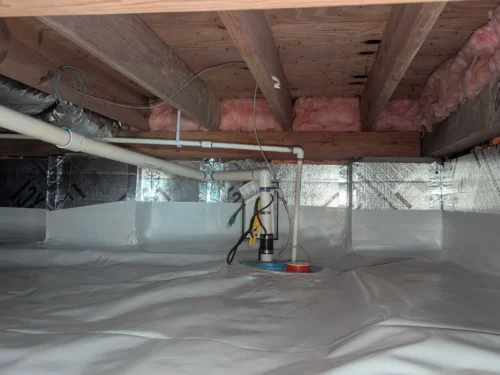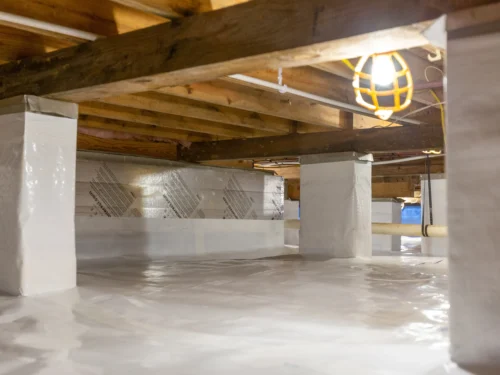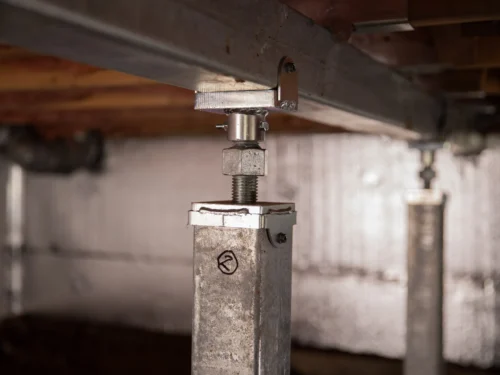Let’s start with a question: when was the last time you checked how rainwater exits your property?
If your answer is “never,” you’re not alone. But here’s the reality—drainage around house foundations isn’t just a detail; it’s one of the leading causes of structural damage in homes across North America when done wrong.
Unchecked runoff leads to expanding soils, foundation movement, leaks, and eventually tens of thousands in repairs.
This isn’t just theory—If you don’t fix your drainage, it will break your foundation.
Let’s break it down.
Why Drainage Around Your Foundation Is a Structural Priority
When rainwater isn’t properly redirected, it saturates the soil around your home. That causes three major risks:
- Hydrostatic pressure: Water builds up and pushes against basement walls.
- Soil expansion and contraction: Especially in clay-heavy regions, wet soil swells and dry soil shrinks—this causes stress and movement.
- Foundation undermining: Erosion under footings reduces load-bearing strength.
What does that look like in your home?
- Cracks in foundation walls (especially horizontal ones)
- Uneven or sagging floors
- Mold, mildew, and musty smells
- Damp or leaky basements
- Doors and windows that stick
What Causes Drainage Issues Around Foundations?
Let’s identify the root problems. These five are the most common—and the most dangerous drainage issues around foundation:
1. Gutter Failure
- Gutters clogged with leaves overflow, dumping water near your foundation.
- Short downspouts discharge too close to your home.
Fix it: Clean gutters quarterly, install leaf guards, and add 10-foot extensions to downspouts.
2. Negative Grading
- Your yard should slope away from your house—about 6″ per 10 feet.
- If it doesn’t, water runs toward the foundation.
Fix it: Regrade the soil or install swales to redirect flow.
3. Impermeable Hardscapes
- Driveways and patios sloping toward your house act like water slides into your basement.
Fix it: Install trench drains or surface channels.
4. Poor Soil Composition
- Clay-rich soil holds water. Sandy soil drains too fast.
Fix it: Amend with proper topsoil or install deep French drains.
5. High Water Table or Heavy Rain Zones
- Some regions are just more vulnerable. In those cases, passive foundation drainage solutions aren’t enough.
Fix it: Combine surface and subsurface systems like sump pumps and exterior waterproofing.
Drainage issues rarely show up overnight. By the time you notice cracks, sagging floors, or sticky doors, the underlying problem might be severe. If you’re unsure what to look for, this guide to recognizing signs of a bad foundation is a must-read.
Foundation Drainage Solutions That Actually Work
Let’s talk action. Here’s how to improve drainage around foundation using tried-and-true methods that actually prevent water-related damage.
Surface Water Management
- Clean gutters and extend downspouts.
- Regrade the landscape around your house.
- Add swales, berms, or rain gardens to redirect water.
Subsurface Solutions
- French Drains: Gravel-lined trench + perforated pipe. Great for high-moisture yards.
- Dry Wells: Collect and slowly disperse runoff underground.
- Drain Tiles: Installed at the footing level to intercept water before it enters the basement.
Mechanical Systems
- Sump Pumps: Must-have for homes in flood-prone or high water table zones.
- Basement Dehumidifiers: Control air moisture and prevent mold.
Pro Tip: If your basement gets damp every season, install a dual-pump system with a battery backup.
Why Foundation Repair and Drainage Must Be Linked
Here’s what too many homeowners miss: fixing a foundation without improving drainage around the foundation is a short-term patch—not a solution. Water will still find its way in.
If you’ve had cracks filled or piers installed, but your gutters are still overflowing and your yard slopes the wrong way… guess what? The problem will come back.
The rule is simple: Every foundation repair should include a full drainage inspection and fix.
And if you’ve been ignoring foundation repair and drainage issues, you need to understand what happens if you don’t fix foundation problems—because the long-term risks are real, and they’re expensive.
Your Annual Foundation Drainage Maintenance Plan
Preventive maintenance isn’t a luxury—it’s the most cost-effective way to avoid foundation disasters. The truth is, water doesn’t take a season off. If you want your home to stand strong for decades, your drainage system needs consistent attention, year-round.
Here’s a simple seasonal checklist:
Spring
- Clear gutters and downspouts
- Test sump pump
- Inspect soil grading
Summer
- Check for standing water after storms
- Re-seed and regrade as needed
Fall
- Remove leaves from roof and gutters
- Check for gutter leaks or damage
Winter
- Ensure drainage systems are clear before freeze
- Test pump backup systems
Want all of this handled by a pro? Our Annual Maintenance covers every seasonal check and correction including technicians changing filters, checking humidity levels, cleaning the pump basin, and more —so you don’t have to second guess a thing. Talk to our team about your drainage around the property foundation.
Final Thought
Rain doesn’t care if your basement is finished. Water doesn’t negotiate. It finds weak spots—and exploits them. So ask yourself: “Is my drainage system working, or am I just hoping it holds up?”
If you’re not sure, don’t wait.
Schedule a FREE inspection and make sure your drainage around the house foundation is actually working—not just holding up by luck.
Stay proactive. Your home’s foundation depends on it.








